 Once again, all together now;
Once again, all together now;
Happy birthday to you!
Happy birthday to you!
Happy birthday dear Space Elevator Blog!
Happy birthday to you!
Yes, I know it’s April Fools day, but again this is no joke – three years ago today, I started this blog. It’s been yet another exciting year. In keeping with my tradition of writing an ‘anniversary post’ (first year summary and second year summary), the following is a list of, IMHO, the more significant happenings in the past 12 months that I was privileged to cover:
The highlights for this past year include:
 The creation of the International Space Elevator Consortium (ISEC). This is the culmination of efforts by most of the ‘leading luminaries’ in the Space Elevator community to create an organization dedicated to actually getting a Space Elevator built. All of the existing Space Elevator organizations that I know about are part of this effort; the Spaceward Foundation, EuroSpaceward, the Japan Space Elevator Association, the Space Elevator Reference, the Space Elevator Wiki and my own Space Elevator Blog. In addition, other individuals who have had a long history within the Space Elevator effort have also joined in this effort. I am very honored to be the President of this organization and pledge to do whatever I can to make a Space Elevator happen within my lifetime.
The creation of the International Space Elevator Consortium (ISEC). This is the culmination of efforts by most of the ‘leading luminaries’ in the Space Elevator community to create an organization dedicated to actually getting a Space Elevator built. All of the existing Space Elevator organizations that I know about are part of this effort; the Spaceward Foundation, EuroSpaceward, the Japan Space Elevator Association, the Space Elevator Reference, the Space Elevator Wiki and my own Space Elevator Blog. In addition, other individuals who have had a long history within the Space Elevator effort have also joined in this effort. I am very honored to be the President of this organization and pledge to do whatever I can to make a Space Elevator happen within my lifetime.
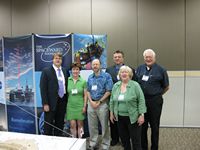 Attending and blogging on the Space Elevator Conference in Redmond, Washington. The Space Engineering and Science Institute did an outstanding job in organizing this conference. The arrangements, facilities and speakers were first-rate. I truly enjoyed all of the presentations I heard and also presented my own paper on who, IMHO, might be the first entity to actually create a Space Elevator.
Attending and blogging on the Space Elevator Conference in Redmond, Washington. The Space Engineering and Science Institute did an outstanding job in organizing this conference. The arrangements, facilities and speakers were first-rate. I truly enjoyed all of the presentations I heard and also presented my own paper on who, IMHO, might be the first entity to actually create a Space Elevator.
 Watching the traffic at this site continue to grow. This post is number 1,172 for this blog so I’m averaging nearly 400 posts per year. In it’s first year, the Space Elevator blog had approximately 28,000 hits. In it’s second year, this blog had about 68,000 hits. In this third year, we’ve had nearly 80,000 hits. While the growth rate looks like it has slowed, this is actually not the case – the average daily traffic has increased significantly. In the blog’s first and second years, traffic spiked during my coverage of the Space Elevator Games. I put up many posts during the Games and nearly 40% of the website hits in year 1 and year 2 were generated during that 10-12 day period. Even though there were no Space Elevator Games in this past 12 months, traffic at this site still increased over 15%. I fully expect our traffic numbers to double in the coming year with a) coverage of the Space Elevator games and b) coverage of the activity by the International Space Elevator Consortium (ISEC).
Watching the traffic at this site continue to grow. This post is number 1,172 for this blog so I’m averaging nearly 400 posts per year. In it’s first year, the Space Elevator blog had approximately 28,000 hits. In it’s second year, this blog had about 68,000 hits. In this third year, we’ve had nearly 80,000 hits. While the growth rate looks like it has slowed, this is actually not the case – the average daily traffic has increased significantly. In the blog’s first and second years, traffic spiked during my coverage of the Space Elevator Games. I put up many posts during the Games and nearly 40% of the website hits in year 1 and year 2 were generated during that 10-12 day period. Even though there were no Space Elevator Games in this past 12 months, traffic at this site still increased over 15%. I fully expect our traffic numbers to double in the coming year with a) coverage of the Space Elevator games and b) coverage of the activity by the International Space Elevator Consortium (ISEC).
 Watching the preparations for the next Space Elevator Games. Even though the Games were not held at the hoped for time, it still has been an absolutely fascinating experience watching Spaceward and the competition teams get ready for the next Games. I don’t think the scope of the next Games has been really appreciated by most people. To win this competition, teams will now have to use a laser to power a climber that will ascend/descend a 1 kilometer-long tether. This is freaking awesome! Spaceward, the organization that hosts these games, now has to deal with entities like the Laser Clearing House to ensure that there are no satellites passing overhead which might be temporarily ‘blinded’ by a competitors laser beam. A full two million US Dollars is on the line, available to a team that can do this climb at an average of 5 meters/second. It really is magnificent and I can’t wait for it to happen.
Watching the preparations for the next Space Elevator Games. Even though the Games were not held at the hoped for time, it still has been an absolutely fascinating experience watching Spaceward and the competition teams get ready for the next Games. I don’t think the scope of the next Games has been really appreciated by most people. To win this competition, teams will now have to use a laser to power a climber that will ascend/descend a 1 kilometer-long tether. This is freaking awesome! Spaceward, the organization that hosts these games, now has to deal with entities like the Laser Clearing House to ensure that there are no satellites passing overhead which might be temporarily ‘blinded’ by a competitors laser beam. A full two million US Dollars is on the line, available to a team that can do this climb at an average of 5 meters/second. It really is magnificent and I can’t wait for it to happen.
 The release of a paper by Ben Shelef, CEO of the Spaceward Foundation entitled “The Space Elevator Feasability Condition“. This paper represents, IMHO, the first serious review of what it will take to build a Space Elevator since the Edwards-Westling Space Elevator book. In his paper, Ben argues that a tether as weak as 25-30 MYuris may be strong enough to build a useful Space Elevator tether. He discusses the various parameters which make up his calculations and shows how they relate to each other. Reading and understanding this document should be a requirement for anyone who is interested in Space Elevators.
The release of a paper by Ben Shelef, CEO of the Spaceward Foundation entitled “The Space Elevator Feasability Condition“. This paper represents, IMHO, the first serious review of what it will take to build a Space Elevator since the Edwards-Westling Space Elevator book. In his paper, Ben argues that a tether as weak as 25-30 MYuris may be strong enough to build a useful Space Elevator tether. He discusses the various parameters which make up his calculations and shows how they relate to each other. Reading and understanding this document should be a requirement for anyone who is interested in Space Elevators.
And finally, getting a professional-looking masthead for this blog. I want to thank Susan Seichrist once again for doing an outstanding job with this.
 Other highlights occuring the past year the announcement of the first Japan Space Elevator Games, attending ISDC2008 and seeing Ben Shelef’s absolutely awesome model of a hypothetical Space Elevator Games held at Meteor Crater in Arizona, the captain of the Kansas City Space Pirates, Brian Turner, appearing on the Conan O’Brien show, the release of the Iron Man comic book where the chief protagonist, Tony Stark, successfully manages the construction of a Space Elevator, Dr. Who and his cohorts using a Space Elevator to help thwart the bad guys, acknowledging NASA’s 50th Anniversary, the release of Ropewalk, installing DSL for my Mother, and beer-pouring robots.
Other highlights occuring the past year the announcement of the first Japan Space Elevator Games, attending ISDC2008 and seeing Ben Shelef’s absolutely awesome model of a hypothetical Space Elevator Games held at Meteor Crater in Arizona, the captain of the Kansas City Space Pirates, Brian Turner, appearing on the Conan O’Brien show, the release of the Iron Man comic book where the chief protagonist, Tony Stark, successfully manages the construction of a Space Elevator, Dr. Who and his cohorts using a Space Elevator to help thwart the bad guys, acknowledging NASA’s 50th Anniversary, the release of Ropewalk, installing DSL for my Mother, and beer-pouring robots.
Downers for the year include my inability to attend either the EuroSpaceward conference or the Japan Space Elevator Association conference due to reasons which are beyond bizarre and the disappointment of Arthur C. Clarke’s last book, The Last Theorem (released posthumously).
So, what’s coming up this year? Well, first and foremost should be the Space Elevator Games. As you are reading this, I should be returning home from a trip to an ‘undisclosed location’ with Ben Shelef of the Spaceward Foundation (hosts of the Space Elevator Games), trying to finalize arrangements for the Games. Let’s hope we were successful. Also upcoming is the next Space Elevator Conference, scheduled for August 13-16 of this year. The inaugural Japan Space Elevator Games are scheduled for early August and I would expect either/both the Europeans and Japanese to have another Space Elevator Conference this year (which I really do want to attend?).
The International Space Elevator Consortium (ISEC) should become a serious force for pushing the idea of someone (anyone) building a Space Elevator. We have a lot riding on this organization and I encourage you to visit our website and JOIN us in helping make this game-changing idea a reality.
Stay tuned and, thanks again for reading!
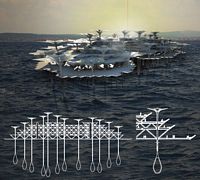 In the Department of Architecture at California State Polytechnic University, Professor Michael Fox had his students do a very cool and relevant project, a design of an ocean-based base station for a Space Elevator. As far as I know, this is the first time that people from the Architecture world have had a go at this. When the time comes to actually design a real base station, we will need the Architects to work along with the Engineers in order to design this right. Yes, we could just have a floating platform that looks like an ocean-based oil rig, but why not make it aesthetically pleasing as well? Plus, architects are going to include amenities and other practicalities that would not be obvious to engineering-type designers.
In the Department of Architecture at California State Polytechnic University, Professor Michael Fox had his students do a very cool and relevant project, a design of an ocean-based base station for a Space Elevator. As far as I know, this is the first time that people from the Architecture world have had a go at this. When the time comes to actually design a real base station, we will need the Architects to work along with the Engineers in order to design this right. Yes, we could just have a floating platform that looks like an ocean-based oil rig, but why not make it aesthetically pleasing as well? Plus, architects are going to include amenities and other practicalities that would not be obvious to engineering-type designers. There are 11 designs in all – each of them really outstanding. I invite you to visit the main project website and look at the effort each of these teams have put into this project and the level of thought and detail that they have included. I hope to be writing more about this project in the near future.
There are 11 designs in all – each of them really outstanding. I invite you to visit the main project website and look at the effort each of these teams have put into this project and the level of thought and detail that they have included. I hope to be writing more about this project in the near future.
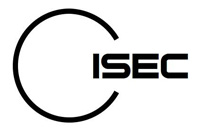 In March of 2008, I
In March of 2008, I  I am very pleased to announce that Jan Bilek, a long-time Space Elevator enthusiast, has volunteered to take on this task. Jan will be actively soliciting translations through his contacts and I’m confident that he will be able to move this project forward. The Space Elevator will benefit all humanity and I think it is only fitting that we who are actively promoting this idea be able to communicate at least the name of the concept in as many languages as possible.
I am very pleased to announce that Jan Bilek, a long-time Space Elevator enthusiast, has volunteered to take on this task. Jan will be actively soliciting translations through his contacts and I’m confident that he will be able to move this project forward. The Space Elevator will benefit all humanity and I think it is only fitting that we who are actively promoting this idea be able to communicate at least the name of the concept in as many languages as possible. I received this update from Bert Murray, team captain of the
I received this update from Bert Murray, team captain of the 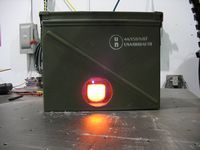
 Brian Turner, captain of the
Brian Turner, captain of the 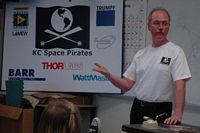


 Google, a company which has been rumored to be interested in building a Space Elevator, has formed a new venture entitled
Google, a company which has been rumored to be interested in building a Space Elevator, has formed a new venture entitled  Finally if you’re a fan of
Finally if you’re a fan of 
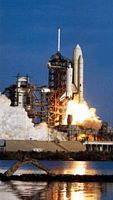
 As I
As I 
 This is starting to become very cool – more and more people / groups are releasing music about the Space Elevator. With the recent find of the song by Apraxis, that makes at least 4 Space Elevator songs I’ve found so far. Maybe I’ll put up a poll at some point and let people vote for their favorite – we can ask Simon Cowell to host a “Space Elevator Idol” show…
This is starting to become very cool – more and more people / groups are releasing music about the Space Elevator. With the recent find of the song by Apraxis, that makes at least 4 Space Elevator songs I’ve found so far. Maybe I’ll put up a poll at some point and let people vote for their favorite – we can ask Simon Cowell to host a “Space Elevator Idol” show… Ben is the CEO of the
Ben is the CEO of the 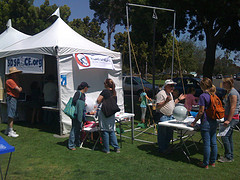
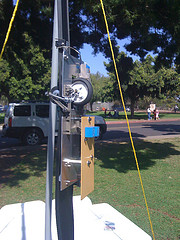
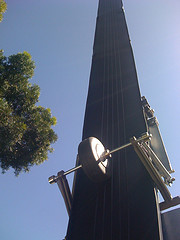
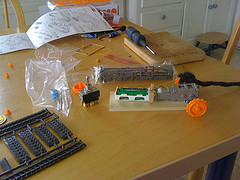
 The fourth in the series of the Space Elevator Spring Chats, hosted by Marc Boucher at the
The fourth in the series of the Space Elevator Spring Chats, hosted by Marc Boucher at the 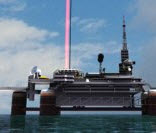 Two months ago, I
Two months ago, I 
 Once again, all together now;
Once again, all together now; The creation of the
The creation of the  Attending and blogging on the
Attending and blogging on the  Watching the traffic at this site continue to grow. This post is number 1,172 for this blog so I’m averaging nearly 400 posts per year. In it’s first year, the Space Elevator blog had approximately 28,000 hits. In it’s second year, this blog had about 68,000 hits. In this third year, we’ve had nearly 80,000 hits. While the growth rate looks like it has slowed, this is actually not the case – the average daily traffic has increased significantly. In the blog’s first and second years, traffic spiked during my coverage of the Space Elevator Games. I put up many posts during the Games and nearly 40% of the website hits in year 1 and year 2 were generated during that 10-12 day period. Even though there were no Space Elevator Games in this past 12 months, traffic at this site still increased over 15%. I fully expect our traffic numbers to double in the coming year with a) coverage of the Space Elevator games and b) coverage of the activity by the International Space Elevator Consortium (ISEC).
Watching the traffic at this site continue to grow. This post is number 1,172 for this blog so I’m averaging nearly 400 posts per year. In it’s first year, the Space Elevator blog had approximately 28,000 hits. In it’s second year, this blog had about 68,000 hits. In this third year, we’ve had nearly 80,000 hits. While the growth rate looks like it has slowed, this is actually not the case – the average daily traffic has increased significantly. In the blog’s first and second years, traffic spiked during my coverage of the Space Elevator Games. I put up many posts during the Games and nearly 40% of the website hits in year 1 and year 2 were generated during that 10-12 day period. Even though there were no Space Elevator Games in this past 12 months, traffic at this site still increased over 15%. I fully expect our traffic numbers to double in the coming year with a) coverage of the Space Elevator games and b) coverage of the activity by the International Space Elevator Consortium (ISEC). Watching the preparations for the next
Watching the preparations for the next  Other highlights occuring the past year the announcement of the first
Other highlights occuring the past year the announcement of the first